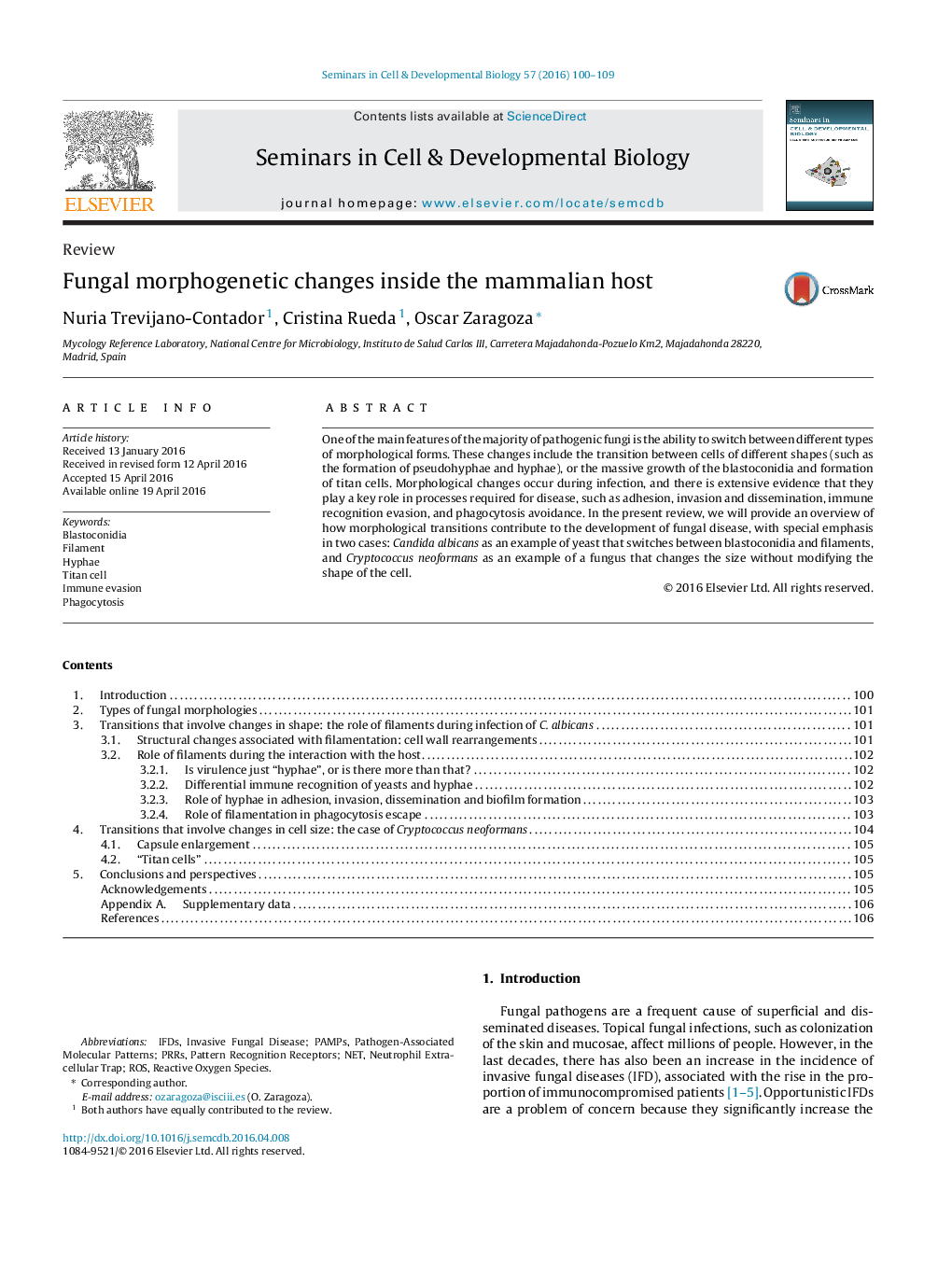| کد مقاله | کد نشریه | سال انتشار | مقاله انگلیسی | نسخه تمام متن |
|---|---|---|---|---|
| 2202463 | 1551366 | 2016 | 10 صفحه PDF | دانلود رایگان |
• Fungal morphogenesis comprises changes in the shape and/or size of the cell.
• Fungal filaments participate in processes required for disease.
• Different fungal morphotypes are differentially recognized by leukocytes.
• Pseudohyphae and hyphae contribute to escape from phagocytic cells.
• Blastoconidia of an abnormal large size allow long term persistence in the host.
One of the main features of the majority of pathogenic fungi is the ability to switch between different types of morphological forms. These changes include the transition between cells of different shapes (such as the formation of pseudohyphae and hyphae), or the massive growth of the blastoconidia and formation of titan cells. Morphological changes occur during infection, and there is extensive evidence that they play a key role in processes required for disease, such as adhesion, invasion and dissemination, immune recognition evasion, and phagocytosis avoidance. In the present review, we will provide an overview of how morphological transitions contribute to the development of fungal disease, with special emphasis in two cases: Candida albicans as an example of yeast that switches between blastoconidia and filaments, and Cryptococcus neoformans as an example of a fungus that changes the size without modifying the shape of the cell.
Journal: Seminars in Cell & Developmental Biology - Volume 57, September 2016, Pages 100–109
